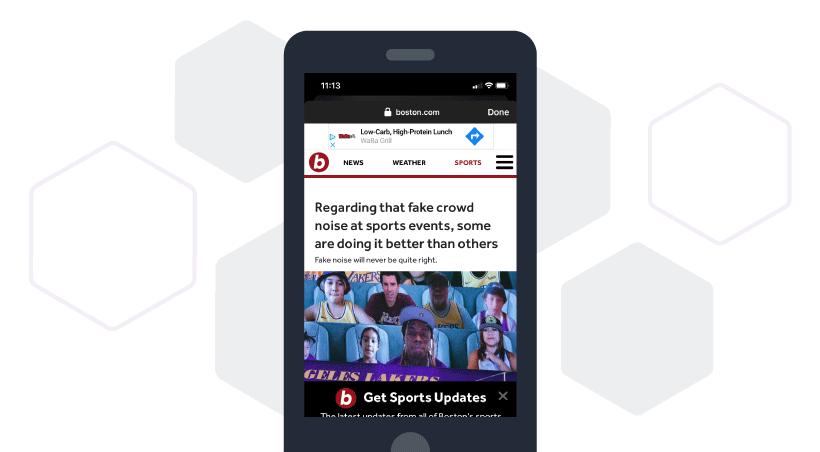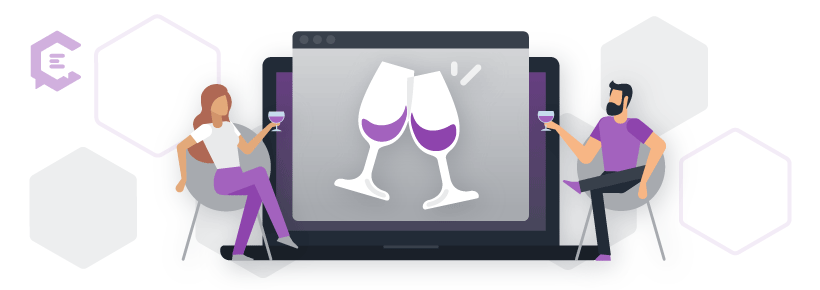If necessity truly is the mother of invention as the proverb goes, 2020 will go down as a year when some good came out of a whole lot of bad when it comes to digital innovation sparked by global calamity. Zoom video conferencing, telemedicine, food delivery apps, and an inspired lot of TikTok videos as a way of passing time are some that quickly come to mind.
But in a transformational year that has forced change in so many ways — lifestyle to workplace logistics — it’s worth noting the many wins in the realm of transformative digital experiences when it comes to content and content creation devices. Especially things that may’ve never previously come to fruition but have left us instead with a sense of pride, purpose and community.
Sure, life in 2020 may’ve been canceled for the most part, but some better things have emerged from the smoldering ash pile once known as expectations. You just need to know where to look.
Let’s get into some of them.
5 digital content experiences that are here to stay post-COVID-19:
1. Virtual sports fandom
When all professional sports shut down back in March due to COVID, many leagues began visualizing how to fill fan-less stadiums and arenas once they finally reopened for business.
Luckily, the NBA led the way with a fan experience like no other inside their Orlando, Florida “bubble” by setting up digital video boards for “virtual fans” watching games live from their homes. The effort is unlike anything we’ve ever seen previously. It has taken fandom to new heights and is more immersive than the cardboard cut-outs you’re currently seeing at MLB games.
As someone who sat second row behind Lil Wayne as a virtual fan at the Lakers/OKC NBA game on August 5, I’m here to tell you the experience is actually pretty cool and preferable to sitting at home watching in a Cheeto-dust filled bubble of your own making. Thanks to Microsoft Teams, you log in via laptop and “sit” in a virtual section with like-minded fans to experience the game via “Together Mode.” It can be a little glitchy depending on your home Wi-Fi, but overall, you get to be around and interact with other fans of your team virtually — or in my case, sit behind one of the most influential hip-hop artists of his generation.
It should be said that there’s no substitute for the live-game experience, but virtual fandom does demonstrate a way for how fans can be integrated into the atmosphere and appear in the arena (or in my freak case, on TV). It’s not available to all fans (you do need an invite), but this kind of interactivity could be the ticket to interactive game viewing as a relatively low-cost replacement with a high-payoff in terms of fandom. It will be interesting to see if it stays around once fans return to the arenas.
2. Digital cameos from famous people
When John Krasinski launched his YouTube show ‘Some Good News’ early on during the pandemic, it became clear there was an audience and appetite for optimism and feel-good videos during a dark time.
Another thing it proved is that Zoom makes it easy for celebrities, experts and other notables to drop in — with a relatively low level of effort — to surprise large groups of people without ever getting on a plane, or physically moving off their couch.
Take the ‘SGN’ episode for example where Oprah, Malala, Steven Spielberg and Jon Stewart all interacted with members of the 2020 graduating class to help fill the commencement address void. You had to be almost completely dead inside not to experience a case of the feels when these moments revealed themselves. Add to this various fundraisers, causes and this Zoom compilation for Americares and the normalization of digital drop-ins as entertainment has begun and isn’t going anywhere soon.
It’s especially worth noting for marketers tasked with throwing virtual events and re-imagining how celebrities can interact with brands.
3. Virtual live-entertainment events
The number of live events that were canceled due to COVID-19 was staggering — and for good reason. Coachella, South By Southwest, and March Madness all came off the calendar in a jiff once these live events revealed themselves as potential Petri dishes.
Cut to a massive rethinking of how live/shared entertainment experiences could be done virtually. In regards to shared experiences involving digital technology, there have been a couple of notable launches in the realm of pop-up entertainment:
- Travis Scott’s “Astronomical” debut inside the Fortnite video game had a record 12.3 million participants — an all-time record for a virtual performance in part because of stay-at-home orders.
- Jenny Yang’s “Comedy Crossing” was another innovative creation as a byproduct of COVID, premiering a popular standup comedy show inside the Nintendo Switch video game Animal Crossing. It could also be watched live on Zoom.
As an example of how coronavirus led to Yang’s content creation, here’s an explanation from a recent story on Vulture:
“When Yang first started playing the game a few months ago, she could immediately see the potential. Like everyone else, she downloaded Animal Crossing not long after the country shut down. ‘It was a sad quarantine purchase,’ Yang says, laughing. ‘I got the game because I was so sad.’ But before long, ‘it very quickly dawned on me that I could try to re-create all the places I missed in real life, including a comedy club.'”
As with NBA games, there is no replacement for the live comedy club experience. But there is potential in creating a shared experience that is new, fun and finds people who might not otherwise have an opportunity to attend.
4. Immersive virtual experiences and virtual reality (VR)
Virtual reality has been virtually arriving on the scene since the 1990s. It seems that its future is always in doubt, but what’s not in doubt? The desire for virtual tours — especially in the face of coronavirus. That’s why the key phrase “virtual tours” skyrocketed 7x from the month of February to March 2020 according to data from Google Keyword Planner.
With the renewed interest in visiting popular tourist destinations such as the Louvre or Great Wall of China virtually, interest is skyrocketing thanks to immersive 360-degree experiences being offered by Google Arts & Culture and the venues themselves.
As a result, the race to experience everything from museums to operas in as real a way as possible has renewed intrigue in the face of COVID-19. Virtual tours for real-estate property viewings and virtual shopping malls already existed prior to COVID, but necessity has refocused thinking around how immersive these experiences can actually get as an alternative.
As for virtual reality, this could be a big moment in its constant quest for relevance — not just as an entertainment device but an educational one. With social distancing and ‘stay-at-home’ orders pervading throughout the States, the thirst to experience new destinations firsthand is a very real thing.
We’ll see where it goes.
5. Teamlancing
The final example is not as much an immersive content experience as it is the process of creating it.
Given the global work-from-home experiment that’s taken place during COVID-19, the ease and preference of working remotely appears like it’s here to stay. Gone for the moment are in-house brainstorms, mood boards and daily stand-ups that served no purpose other than to get people to work on time.
Instead, employers have been set on using teams of freelancers to work projects together as a way to fuel productivity, ingenuity and results as they move to a more flexible and economic future work model. Sure, there will still be a need for in-house teams to exist occasionally, but for executional work that doesn’t require being on-site, the teamlancing model is a blessing in disguise.
Granted, the teamlancing concept wasn’t born during COVID, but it’s gained traction during this time — both as a logistical workaround and efficient solution as remote work productivity has thrived during the pandemic thanks to technological solutions. And with digital companies such as Amazon and Google extending their remote-work policies through 2021, the trend shows no signs of letting up anytime soon.
3 digital experiences that won’t be missed after the pandemic:
1. Virtual happy hours
You may have come up against one of these in your pursuit of networking during the time of COVID. I think we can all agree in one impromptu unscientific poll: having a drink over Zoom ain’t what it’s cracked up to be. Sure, it’s better than drinking alone (I imagine), but when it comes to slapping hands, making impressions in person and teeing up partnerships, I’d like to think we’re all in preference of sharing the same space and a palpable human experience… versus one with a virtual background of a beach.
2. Remote learning as the only option
When the global pandemic forced working parents to not just work from home, but also to step into the massive void created by the need for homeschooling, a nation of parents collectively gasped… “Really?” After all, parents are generally not teachers and depending on the varying degrees of, well, degrees, availability and access, these experiments were either successful or epic fails. Given all the above, it’s likely no one will miss forced homeschooling once all parties return to the classroom.
3. Dating digitally for an entire honeymoon period
It’s true that many online dating platforms have thrived considerably during the COVID-19 pandemic. But the idea of meeting people for a first, second and maybe even third time via Zoom or FaceTime seems like a flash in the pan, born out of necessity, not desire. Although there have been wins in the online dating game, it’s probably not going to have a COVID afterlife once the bars, coffeehouses and clubs reopen.
Digital technology will always have a place in the courtship ritual, sure. Just not as a primary replacement for meet-ups involving drinks or even intimacy. When it comes to some digital content experiences, some things are better left for the real world.








